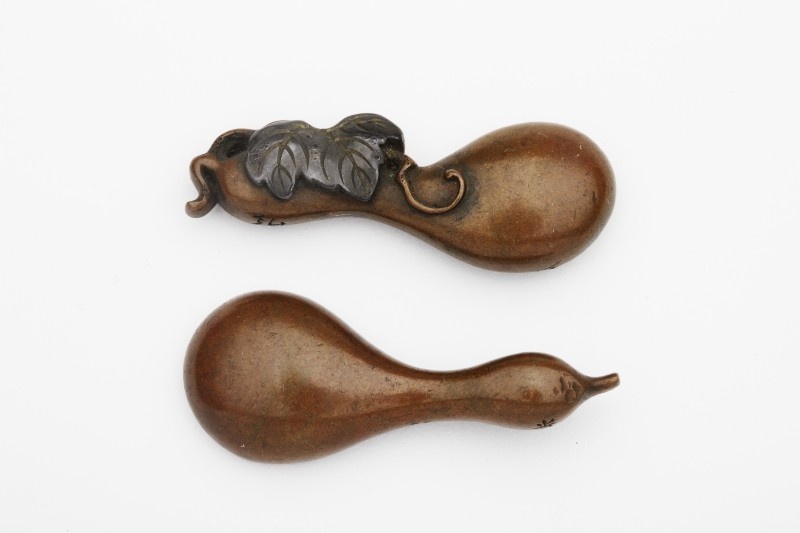Dieses Zierstückpaar, die "menuki", (dazu gehört Inv.Nr.: V 7816) wurde auf beiden Seiten des Schwertgriffes unter der Schnurumwicklung eingelegt. Neben dem Aspekt der Dekoration sollten die plastischen Elemente dem Krieger ermöglichen, das Schwert fester zu fassen. Der Dekor orientierte sich am übrigen Schwertzierrat. Hier sind es Kalebassen, ein Symbol für langes Leben. (Text: Babette Küster)
Ankauf in London 1890.
en

